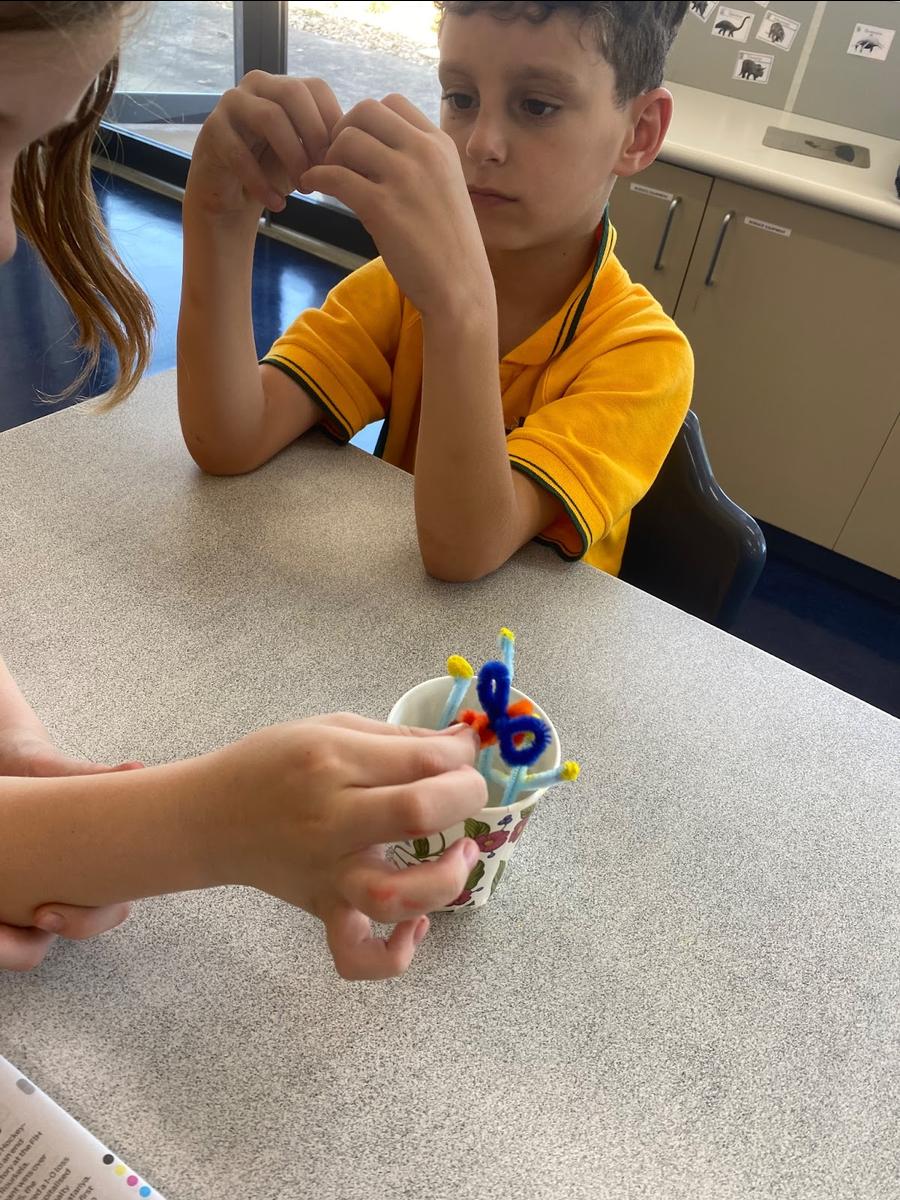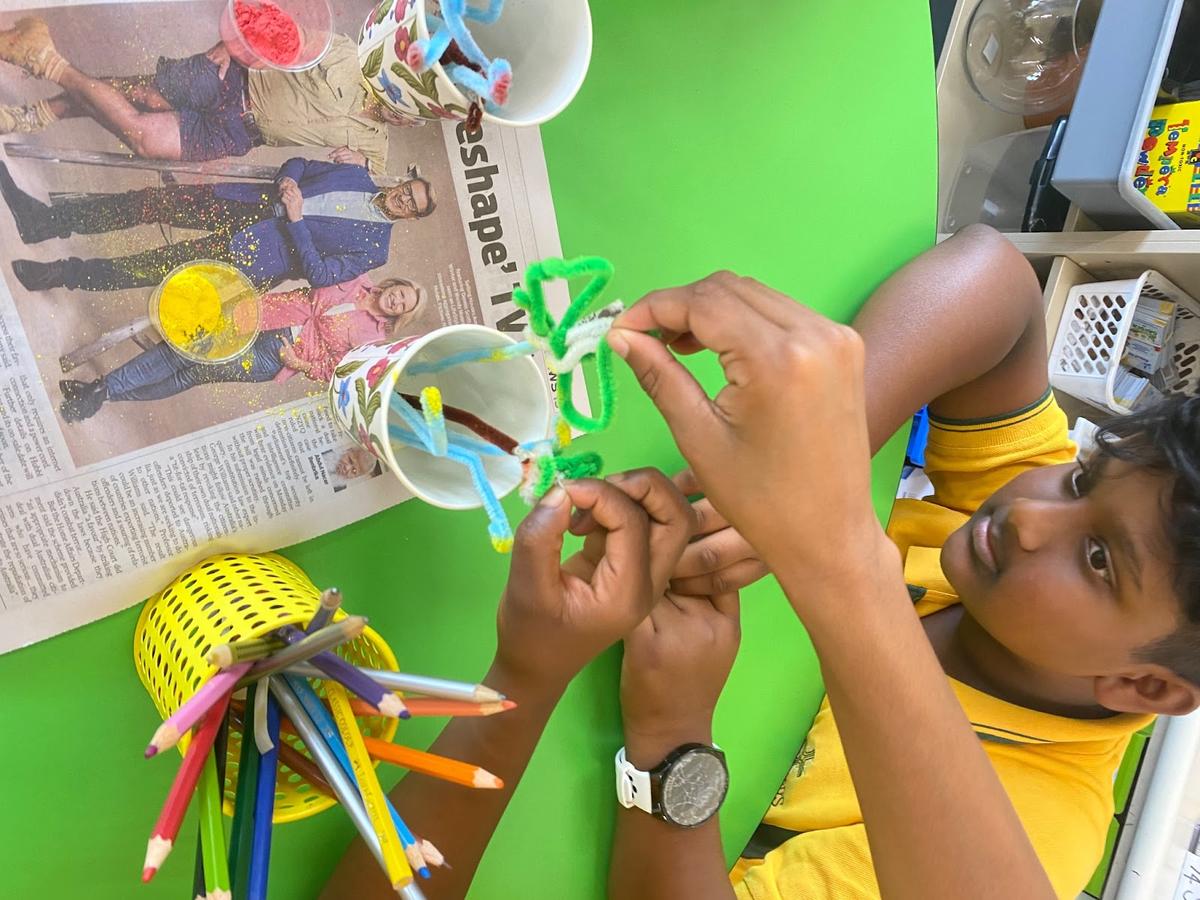Science

Foundation classes have continued investigating what we need to stay alive - water, food, air and shelter.
We have also discussed how our five senses help us to be more aware of our environment, and how they sometimes alert us to dangers, so also contribute to our health and wellbeing.
We have been singing and dancing (being active) to observe how the effects our heart rate and intake of air or oxygen, and then how we can slow this down by taking in some ‘quiet time’
Grade 1/2 - students have been investigating and observing their own teeth, and how comparing size and shape of teeth with modern animals, palaeontologists can hypothesise what types of diets prehistoric animals had.
We have looked at and identified our own teeth as incisors, canines and molars, and even tested these out with some fresh apples in the science room!
Palaeontologists also consider other evidence when thinking about the diets of prehistoric animals, including fossilised dung, stomach contents and gastroliths (stomach stones that can be used by some animals, for example chickens, to grind food in their gizzard as they do not have grinding teeth).
Grade 3/4 - students have continued their investigations about the life-cycles and interactions between living things.
In particular, we have looked at how bees are so important in the life cycle of plants as pollinators.
We have a small tomato plant growing in the science room, and a cutting off another tomato plant which is actually growing tomatoes, and we managed to pollinate some of the flowers and new fruit is now growing (bees usually assist with this by buzzing their winds and blowing the pollen between tomato flowers, so by shaking the flowers in the science room, we have actually done the work of the bees!)
Students created flowers and bees to model how the pollination of other flowering plants occurs, and have also been drawing cross-section diagrams of the internal parts of a flower, and a fruit.
Parents - do you know the real reason plants produce fruit?
It is actually not for our enjoyment but for another purpose. Perhaps ask your child what that purpose is!
Grade 5/6 - students have been looking at the structural features and adaptations that plants and animals have to survive in their environments.
We have investigated how plants have stomata (tiny holes) on the surface area of their leaves to release water into the atmosphere, and also how some desert animals have large ears to regulate heat loss from their body and help the animal to cool down.
Students investigated this by conducting an experiment with a model - they tested the temperature of hot water in a bowl (large ears - large surface area) and hot water in a cup (small ears - small surface area) after waiting five minutes, they then tested and recorded the temperatures again, and repeated this two more times.
They then used their data to graph the results and interpret the results to find that animals with larger ears (greater surface area) can cool themselves more rapidly in a desert environment than animals with smaller ears.



